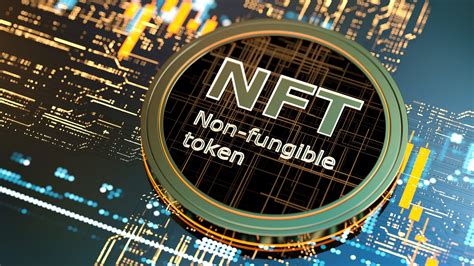- سبدخرید خالی است.
- ادامه خرید
The Future of NFTs: AI as a Creative Partner
The Future of NFTs: How Artificial Intelligence is Revolutionizing the Art World
As the non-fungible token (NFT) market continues to grow in popularity, one innovative technology has emerged that is changing the rules of the game for artists, collectibles, and the entire art world: artificial intelligence (AI). From generating one-of-a-kind digital artworks to creating immersive experiences, AI-powered NFTs are redefining the boundaries of creative expression.
What are NFTs?

Before we dive into how AI is transforming the NFT landscape, let’s briefly recap what NFTs are. A non-fungible token (NFT) is a unique digital asset that represents ownership and provenance of a specific item or experience. In traditional art markets, these items can be easily replicated or replaced with identical copies, often resulting in diminished value and authenticity. NFTs solve this problem by offering exclusive ownership and verification through blockchain technology.
The Rise of AI-Powered NFTs
AI has made waves in a variety of industries, including art, music, fashion, and entertainment, but applying its power to NFTs is particularly exciting. Using machine learning algorithms and computer vision techniques, creators can generate unique digital assets that are both visually stunning and imbued with personality.
One notable example of AI-powered NFT creation is the “Neon Art” project, which uses a neural network to generate vibrant neon-inspired artwork. This innovative technique involves feeding the AI a set of parameters, such as color palette and style, allowing it to produce an ever-changing array of neon-like patterns.
How AI Creates Unique NFTs
So, how does AI create these unique digital works of art? The process typically involves the following steps:
- Training Datasets: A vast collection of images, textures, or other visual data is assembled and labeled with characteristics such as color palette, style, and era.
- Neural Network Models: Custom-built neural networks are trained using these datasets to generate new, unique patterns based on a set of parameters.
- Test and Iterate: The generated artworks are iteratively refined using machine learning algorithms, allowing the AI to adjust and improve its results.
Applications outside of art
While NFTs originated in the art world, AI-powered creations can be applied to a variety of industries:
- Gaming: AI-generated game characters, environments, or even entire worlds can create immersive experiences that are both engaging and memorable.
- Fashion
: AI-designed clothing and accessories can generate unique, one-of-a-kind items with intricate details and patterns.
- Music: AI-powered musical compositions can create complex, algorithmically generated melodies that evoke emotions and reactions.
Benefits of AI-powered NFTs
Integrating AI into NFT creation offers a number of benefits for artists, collectors, and the broader art market:
- Increased Creativity: By automating certain tasks, such as image generation or texture synthesis, creators can focus on higher-level creative decisions.
- Improved Consistency: AI-powered tools ensure that each NFT is unique and consistent in its appearance.
- Improved Accessibility: Digital artwork can be created with minimal investment of time and resources, making it more accessible to a wider audience.
Challenges and Future Directions
While the benefits of AI-powered NFTs are clear, there are also challenges that need to be addressed:
- Data Quality and Quantity: Ensuring the accuracy and diversity of training datasets remains critical to maintaining high-quality AI-generated art.
- Security and Verification: As with traditional NFTs, the security and authenticity of AI-generated artwork must be rigorously verified by experts in the field.
3.
